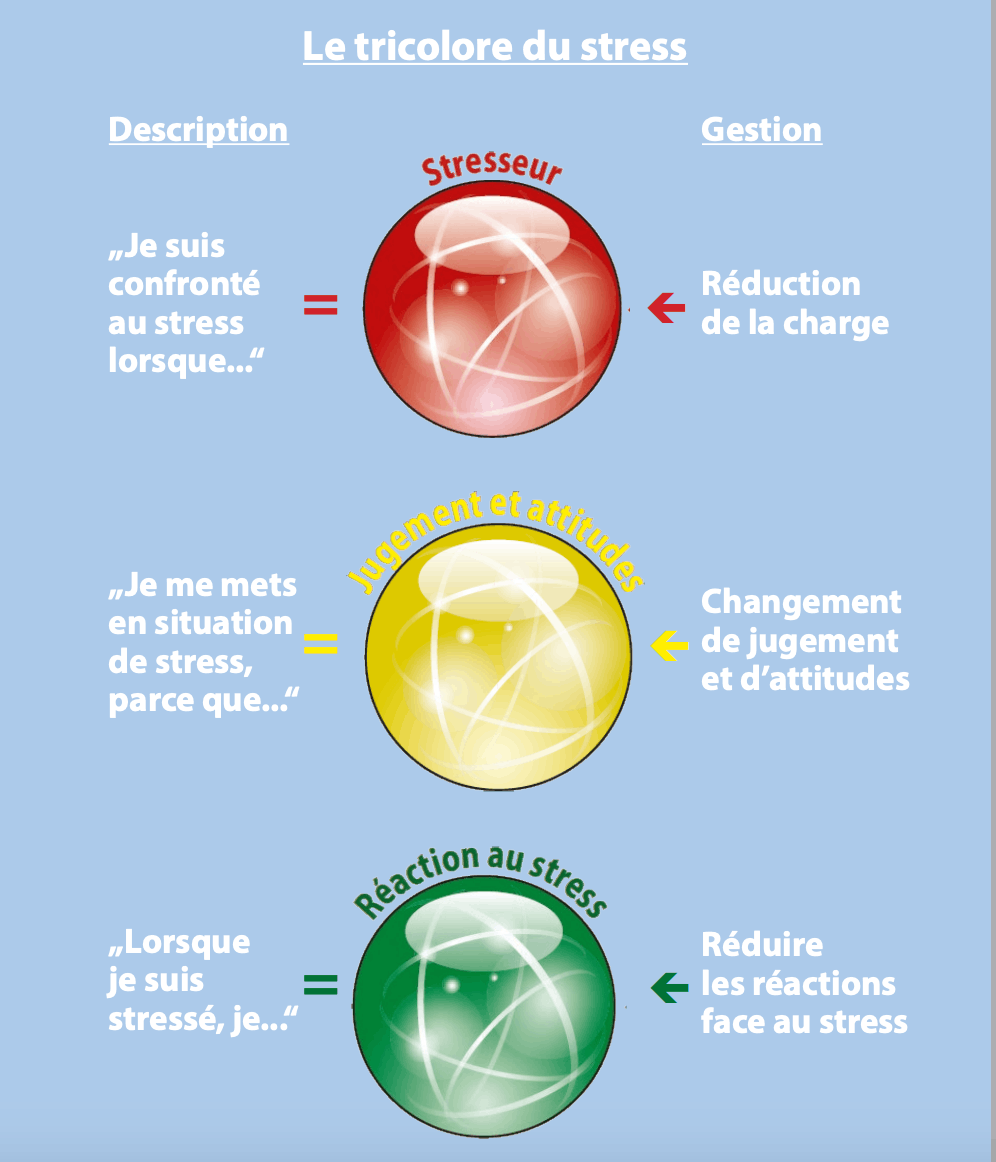Maëlle Hamma: How do you define well-being at work?
Mirjana Vasiljevic: In my opinion, it’s being able to go to work with pleasure, with a kind of lightness, without fear or stomachache, and enjoying what you do.
How does Stressberodung work?
This service takes care of people who suffer from stress at work. This can be stress caused by a conflict with a colleague or overwork, or difficulties in reconciling work and private life. The centre was set up in 2010 and is open to all employees on a confidential basis. All you have to do is contact us.
How does the service work?
First, we have limited the number of appointments per person to five, to reduce waiting times and ensure that as many people as possible can benefit. Because when people call us, they need help as soon as possible. Not months later. Meeting a psychologist can be intimidating. At the first appointment, I explain the procedure, because some people don’t always know what to expect. I ask them why they’re here, what their objective is, and we take a history. We then work on stress reduction, adapting the techniques according to the cause of the stress. The first step is always to try to identify the cause.
What are the causes of stress often cited by employees?
It’s often too heavy a workload, or disagreements or misunderstandings between colleagues that can lead to conflict.

Kaluza’s traffic lights (2011) illustrate the origin of stress factors. Source: Stressberodung, Chambre des salariés/Ligue luxembourgeoise d'hygiène mentale
What signs can a manager identify that would indicate stress in an employee?
A change of mood or attitude in an employee, who may become more aggressive, for example, or much calmer, even detached. There may also be oversights, mistakes that weren’t made before, or a change in behaviour. I would advise the manager to opt for communication, to listen to the employee and to offer help on the points raised. Some companies go even further and offer relaxation therapy, for example.
Sophrology, yoga, meditation... Are these practices really effective in combating work-related stress?
Yes, it helps to relax anyway. But the best thing is to find the source of the stress and target it. Once you’ve identified the cause, you can find solutions to take action.
What about sport?
Sport can be a good solution if you do it in time. But if you’re already under a lot of stress and burnt out, there’s a risk that starting to work out in this context will add a challenge that could end up creating additional stress.
What are the signs that employees can identify to help them avoid becoming overwhelmed?
It obviously varies from person to person: loss of appetite, stomachache or headaches, or diarrhoea. These are little signals that our body sends us to tell us that something isn’t quite right, like an internal GPS telling us to change direction! It can also be a change in sleep quality: waking up often during the night or still feeling very tired when you wake up. What’s more, thinking about a stressful situation and actually being stressed don’t make much difference in the body--the process going on inside is similar. Hence the importance of mindfulness.
Some people claim to work better under stress. It’s possible to have the impression of being more productive, but you also have to look at the results...
What is mindfulness?
It’s all about trying to stay in the present moment. For example, after a hard day of work, when you get home you should avoid thinking about what you haven’t had time to do, or what you have to do tomorrow... Otherwise you can’t detach yourself mentally and the stress stays with you. What can help is to learn to guide our thoughts. A good exercise is to describe an object as objectively as possible. When I explain it, it may seem trivial, but this exercise helps us learn to detach ourselves from judgement and interpretation. When we remain objective, we guide our thoughts towards something objective, which will relax our nervous system.
Why is it in the interests of companies to take account of health and well-being in the workplace?
It can help reduce absenteeism and sickness rates. In terms of productivity, I think that when you have less stress, you’re necessarily in better working conditions. Some people claim to work better under stress. It’s possible to have the impression of being more productive, but you also have to look at the quality of the work, because you can work much harder, but with poorer results. It’s essential to have phases of recovery and rest. Otherwise our system remains in a state of stress which, over time, will become dangerous for the individual. After each phase, you need to take a little time to prepare yourself better for the next phase of stress…
The thorny issue of burnout
Fatigue, being fed up, or genuine burn-out? Burnout is still subject to many divergent opinions. While the World Health Organization (WHO) recognises it as a work-related syndrome, it is not classified as an occupational disease in Luxembourg. This does not necessarily mean that it is not taken into account at all.
According to the Labour and Mines Inspectorate (ITM), it is characterised by three types of symptoms: first, “extreme physical and intellectual exhaustion,” with reduced ability to reason and memory problems. This can eventually lead to real physical pain.
The second characteristic highlighted by the ITM is the “disappearance of empathy and dehumanisation,” with a loss of a sense of humour, excessive anger and/or a noticeable change in behaviour. Finally, the ITM also mentions “loss of enthusiasm for work.”
Still according to the ITM, the “responsibility” for a burnout lies at two levels, with personal factors such as a tendency towards perfectionism, a strong relationship with demands and performance, low self-esteem or difficulty in expressing emotions. “Burnout reflects a rift between the individual and his or her inner self,” says the ITM.
But responsibility is also linked to management, and “medical research recognises the existence of a relationship between managerial styles that are abusive, disrespectful, threatening, hostile, harassing and lacking in signs of recognition, and the increased risk of the aforementioned illnesses among the employees for whom these managers are responsible,” the ITM also points out, recommending that a doctor, psychologist or coach be consulted.
This article was written in for the magazine, published on 20 November. The content is produced exclusively for the magazine. It is published on the website as a contribution to the complete Paperjam archive. .
Is your company a member of the Paperjam Business Club? You can request a subscription in your name. Let us know via
